Search
Remove Ads
Advertisement
Summary 
Loading AI-generated summary based on World History Encyclopedia articles ...
Search Results
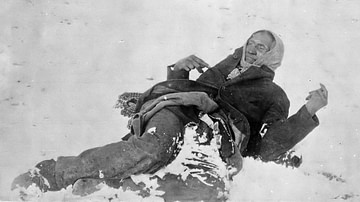
Definition
Wounded Knee Massacre
The Wounded Knee Massacre of 29 December 1890 was the slaughter of over 250 Native Americans, mostly of the Miniconjou people of the Lakota Sioux nation, by the US military at Wounded Knee Creek, South Dakota. Although the US government defined...
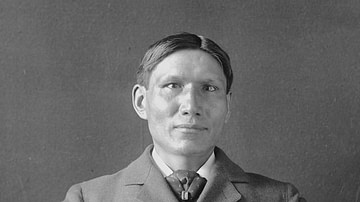
Article
Eastman's Account and Media Coverage of the Wounded Knee Massacre
Of the many first-person accounts of the aftermath of the Wounded Knee Massacre, the report by Sioux author and physician Charles A. Eastman (also known as Ohiyesa, l. 1858-1939) is among the best-known. Eastman describes his experiences...
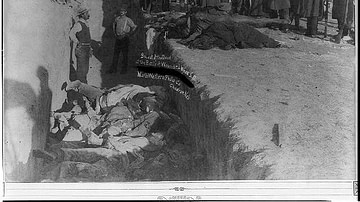
Image
Burial of the Dead in Mass Grave After Wounded Knee Massacre
US soldiers place frozen corpses of Native Americans in a mass grave after the Wounded Knee Massacre of 29 December 1890. Photo by Trager and Kuhn, 1 January 1891, Wounded Knee, South Dakota Library of Congress Prints and Photographs Division...

Image
Corpse of Lakota Chief Spotted Elk After Wounded Knee Massacre
The dead body of Lakota Sioux Chief Spotted Elk (also known as Big Foot, l. 1826-1890) lies in the snow after the Wounded Knee Massacre of 29 December 1890.
US National Archives and Records Administration.
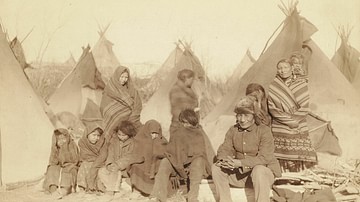
Image
What's Left of Big Foot's Band - Wounded Knee Massacre Survivors
Photo known as "What's Left of Big Foot's Band" by John C. H. Grabill, January 1891, showing the surviving members of the people of Lakota Sioux Chief Spotted Elk (also known as Big Foot, l. 1826-1890) after the Wounded Knee Massacre of 29...

Video
The Wounded Knee Massacre That They Tried To Hide
The Wounded Knee Mas sacre occurred on December 29, 1890, near Wounded Knee Creek on the Lakota Pine Ridge Indian Reservation in South Dakota, USA. It was a tragic and significant event in American history involving the U.S. Army and the...

Video
The Ghost Dance Movement | Native American Culture | Wounded Knee Massacre
The Ghost Dance was a spiritual movement amongst Native Americans that lived in the American west. It began at the end of the 19th century and had a massive influence for the Natives living in the area. It emerged at the time of the last...

Image
Holy Cross Episcopal Mission Used as Hospital at Wounded Knee
The Holy Cross Episcopal Mission, Wounded Knee, South Dakota, used as a hospital for the wounded Lakota Sioux following the Wounded Knee Massacre.

Image
The Battlefield at Wounded Knee
View of the Battlefield at Wounded Knee, South Dakota, the morning after the battle. Photograph presented by Colonel William A. Mercer (New London, Connecticut), December 29, 1890.
US National Archives and Records Administration
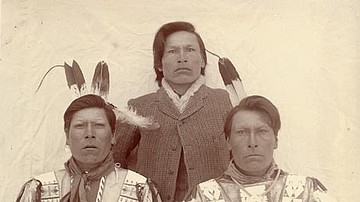
Image
Wounded Knee Survivors
Brothers, (left to right) White Lance, Joseph Horn Cloud (l. 1873-1920), and Iron Hail (also known as Dewey Beard, l. 1858-1955), Wounded Knee survivors; Miniconjou Lakota Sioux. Their parents and families were all slaughtered in the Wounded...